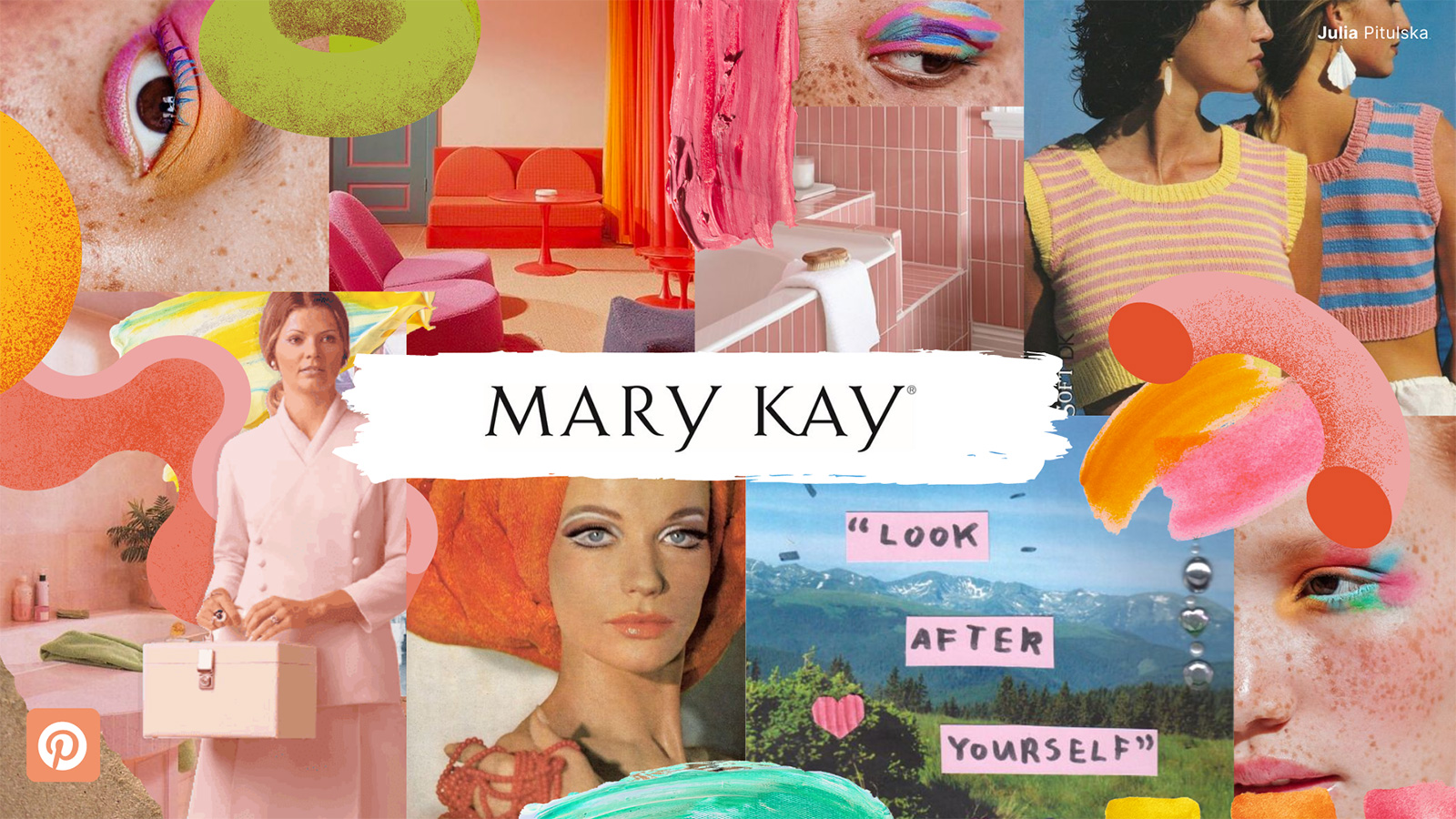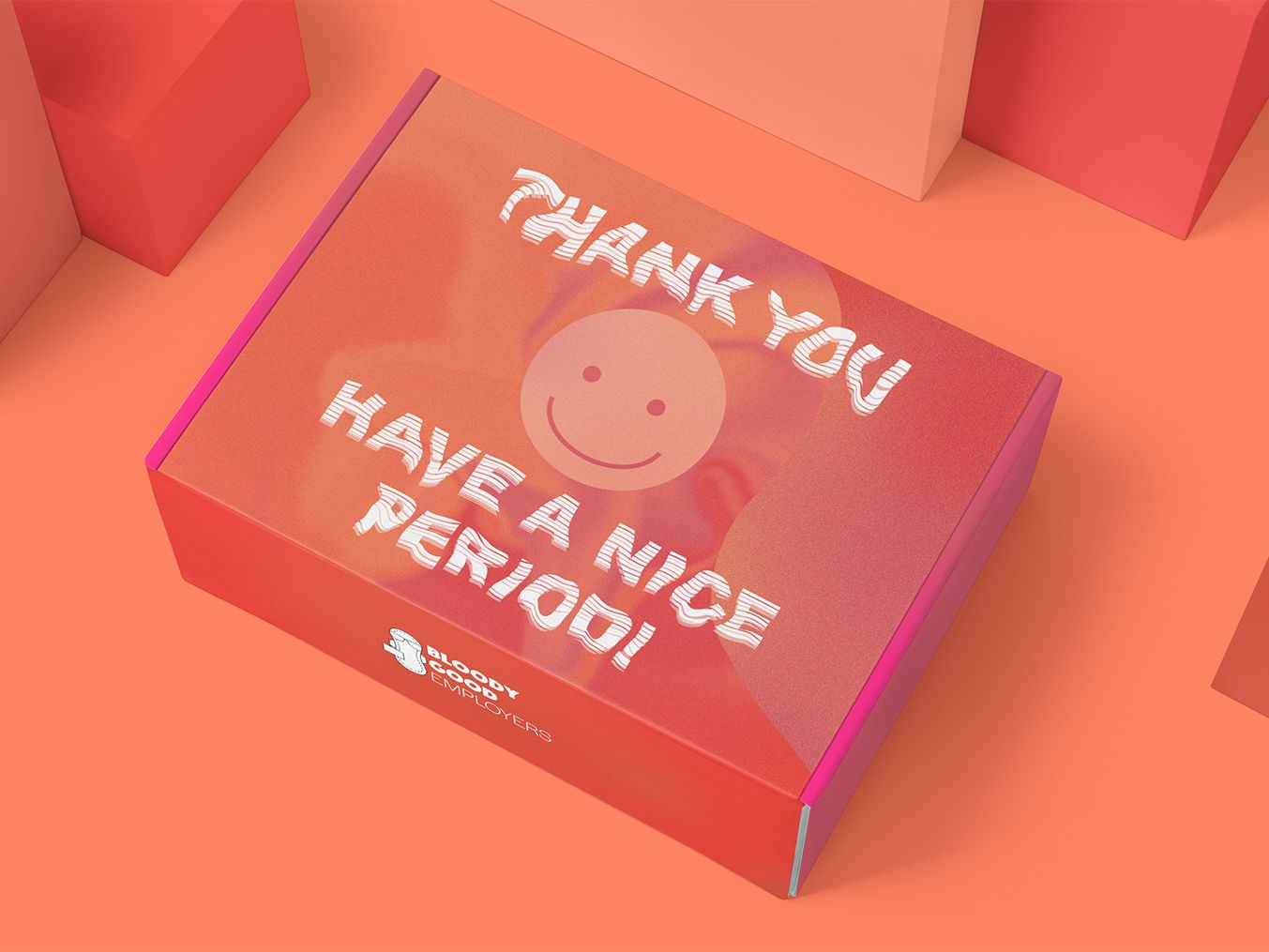Design has a profound influence on many aspects of our daily lives. From the items we use and the spaces around us to the brands on our shelves and technologies connecting us, much of our world has been meticulously developed to facilitate action and inspire feeling.
It’s important to note that the field of design isn’t only home to physical makers and creators. Design development is underpinned by research, process and strategy, and considers aspects such as reframing problems and developing briefs through to prototyping, testing and measuring success. At London College of Communication (LCC), our BA (Hons) Design Management degree enables students to consider many of these issues as they learn how to play their own strategic role in shaping better futures.
In Spring 2021, creative platform ARTSTHREAD partnered with iconic cosmetics brand Mary Kay to launch a global competition where emerging creatives were asked to develop concepts for a 360 omnichannel brand story that could appeal to a fresh demographic. Entrants considered innovative ways of highlighting Mary Kay’s core values - such as its culture of female-empowerment and over 57 years of celebrating female entrepreneurs - to connect with a target audience of 20 to 25 year-old women.
Second-year BA (Hons) Design Management student Julia Pitulska was awarded 3rd Prize for her concept, Beauty With Experience, which focused on utilising Mary Kay’s established history of Corporate Social Responsibility (CSR) initiatives to connect with younger audiences who are particularly drawn to action around socio-cultural issues. By exploring both the heritage and potential future of the company, Julia was able to suggest ways in which its rich brand identity could be better applied to both design and content to generate a more effective customer experience.
Taking part in the competition not only encouraged her to synthesise the skills and knowledge gained during her time at LCC so far, but also enabled her to showcase her approach as a creative practitioner on an international stage while developing vital industry insight.
We caught up with Julia to discuss her journey into the world of design management, the development of her winning idea, highlights from her degree so far, and her experience of undertaking LCC's Diploma in Professional Studies (DPS).

Have you always been interested in exploring the world of design, or was this an area you gravitated towards over time?
I’ve always found myself situated in the middle of 2 extremes. I enjoyed mathematics and economic studies, but I didn’t shy away from the arts and creative endeavours.
As my school years went on, I started to realise that this perspective of ‘2 extremes’ could be shifted. I started to ask myself: ‘What if science-based innovation and creative developments aren’t opposites, but instead 2 sides of the same coin? Would that mean that if we looked at them from a different angle, being a strategist could be complemented by a design-led mindset?’ This was also when I started to look into interdisciplinary degrees - and here we are now.
Nonetheless, I didn’t stop there. My answers to these questions have continued to develop and evolve over time. As I moved further into my studies at LCC, I was able to listen and learn more from my peers and design professionals. Even in my practice, I continuously search for what design really means, and where it fits in with my strategic process.
I would wholeheartedly recommend this reflective practice of questioning design processes to anyone in a field that requires a design mindset, skillset or working models.
Do you specialise in any particular theme, area or technique as part of your creative practice?
In a professional setting, I specialise in strategic planning, design strategy and business analysis. Essentially, I’m a design strategist; however, I also believe that there is more complexity to my practice as a professional than this single label or a single job description.
In a broader sense, I’m a business-minded design professional. What does that equate to? Well, I love to piece together and develop the bigger picture. When I look into business cases, I focus on a brand’s values, organisational culture, business model mechanics, and design potential. I design with system integration and long-term sustainable solutions that flash in my mind from the beginning of my working process. I thrive on user research, data analysis, and strategic evaluations, but equally prosper in ambiguous and complex systems of design models and mindsets.

Why did you decide to apply to BA (Hons) Design Management at LCC?
I was looking for experiences, knowledge sources, and people who could invoke both my creativity and critical thinking skills. At the same time, I wanted to be introduced to new ideas that could challenge me, open the door for new collaborations, and grow my skillset through innovative and open-minded initiatives.
Besides exploring specific professional routes, I was eager to expand my portfolio of thought pieces regarding strategy and design thinking, and to build my personal brand. Not to mention that there were obvious benefits to having a world-class renowned course leader like Mo-Ling [Chui] and interdisciplinary experienced lecturers like Robert [Urquhart] and Lucia [McGuinness].
While I’m on the topic, shout out to the whole DMC team!
What have you most enjoyed about your course so far?
Throughout my second year in particular, I’ve had opportunities to focus more on the hidden privileges of design practice outside of creative bubbles. While researching traditional, local, non-creative services and their B2B organisational models, I’ve been able to form more hypotheses, and have been able to dive into design models across different management processes and service development.
I’ve also been able to start developing my research into the technicalities of implementing design-centered and sustainability-driven strategies that involve changes to backend processes, and sometimes even organisational structure.

How did you find out about the Mary Kay and ARTSTHREAD Challenge, and why did you decide to take part?
The short answer is that my Diploma in Processional Studies (DPS) called for me to explore outside investigative projects and global challenges within my own design specialism.
The long answer is that my personal DPS experiences and the growth of my skillset led me to take on a global design strategy competition. I was interested in exploring a more corporate structure of omnichannel brand strategy and customer segment acquisition, and my search enabled me to find out about the Mary Kay and ARTSTHREAD Challenge. This was helped by being a member of the ARTSTHREAD platform, which I highly recommend to all young creatives!
The process of building a strategy pitch combined with the time restrictions of a competitive process inspired a new sense of passion and dedication towards my professional work. This opportunity also became a further testament to my developing specialism in strategic practice.
Tell us about your creative process - what inspired your idea, and how did you develop it?
With decades of experience in leading initiatives around Corporate Social Responsibility (CSR), standing behind the empowerment of women globally, and investing millions of dollars in research and development, I found that Mary Kay has what it takes to lead as an influential beauty brand in the 21st century.
Empowerment-centered, science-based and in line with transparent, positive social impact – the values were all there when I began to go through my analysis and design audit of the brand. However, I discovered that while these initiatives were mentioned in the depths of their blog entries and the bottom of website subpages, the Mary Kay social media and marketing segment wasn’t using any of them.
I asked: ‘Why hide all of this good work under a focus on industry-standard marketing communications? Why not put the beautifully built ecosystem on the front line of the Mary Kay omnichannel brand strategy?’
When I collaborate with a more traditional business, the key to my work as a design strategist is not only understanding the issue of design implementation for a brand, but also to operationalise the strategy. It’s all about bridging the gap between the data-driven, performance-oriented roam of the business world with the ever-changing bigger picture of complex and networked societies, economies and organisations.
What was your major highlight of taking part in the Challenge?
My major highlight was seeing my strategy recognised by a global brand like Mary Kay!
It brings more self-belief and dedication to my professional development as a strategist.

You mentioned that the Diploma in Professional Studies (DPS) encouraged you to explore opportunities like the Mary Kay and ARTSTHREAD Challenge – why did you decide to undertake DPS, and what were the best things about your experience?
My motivation to apply for DPS was mostly driven by a professional shift in my life: from working in a corporate setting before realising its systemic flaws and design privileges to a year-long burnout and, finally, the urge to seek a higher purpose with both my practice and the development of my personal brand.
I never imagined back then that the world was going to go into a new normal of Zoom calls, quarantines, remote work and prolonged isolation periods! With that being said, I think that this year inspired a profoundly reflective period of practice and work purpose discovery. I also can’t forget to mention the inspiration and guidance that I’ve received from both Sarah [Temple] and Steph [McLaren-Neckles] on the DPS team!
Whether working with a global multi-brand retailer like Selfridges on their sustainability strategy, challenging myself to develop brand strategy for Mary Kay, or receiving guidance from well-established strategists from URGE Collective, I feel like I’ve finally started to tune in with the integrity and core of my specific design practice.
Looking back on your experience of undertaking the DPS during recent global challenges, how has the experience supported you to grow as a future-facing practitioner?
The drive towards redesigning what business and social experiences will stand for in today's environment of easing out of pandemic restrictions is an underlying objective for many of the projects I’ve undertaken throughout my DPS year. Moreover, I believe that possibilities like remote collaborations and spaces for collective community developments are a great starting point for the development and rise of ‘New Agencies’ that aim towards the betterment of human experience and sustainable futures.
I believe that experiences like these – especially as I enter my final year of degree studies - will provide me with an opportunity to thrive as a strategist in an innovative environment, to work on projects in or outside of the creative industry, and to take an active role in the facilitation of design-led change!
Related links:
- Find out more about the Mary Kay and ARTSTHREAD Challenge, and explore Julia's winning concept.
- Follow Julia on LinkedIn and Instagram.
- Explore BA (Hons) Design Management at LCC.
- Learn more about our Diploma in Professional Studies.





